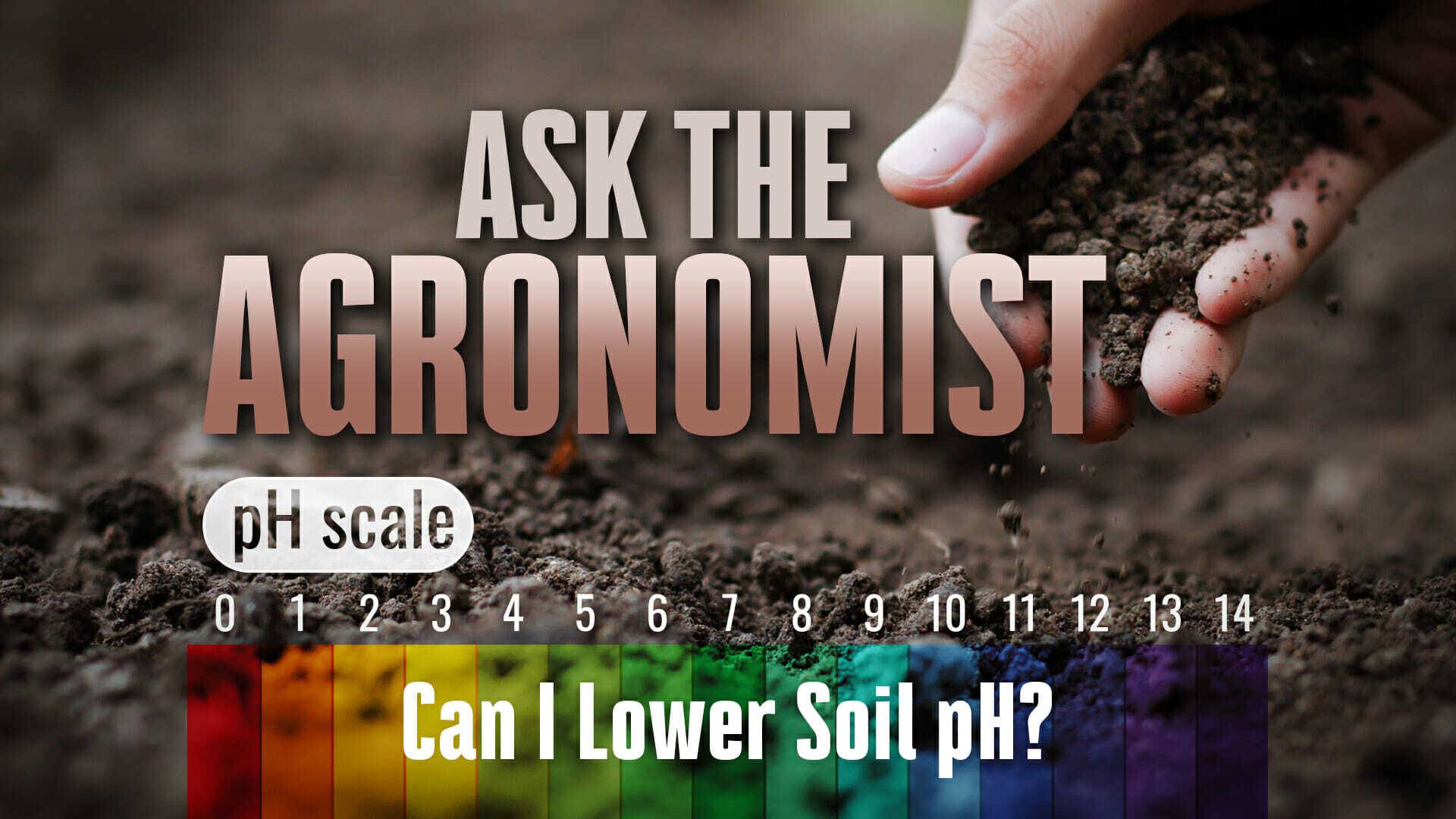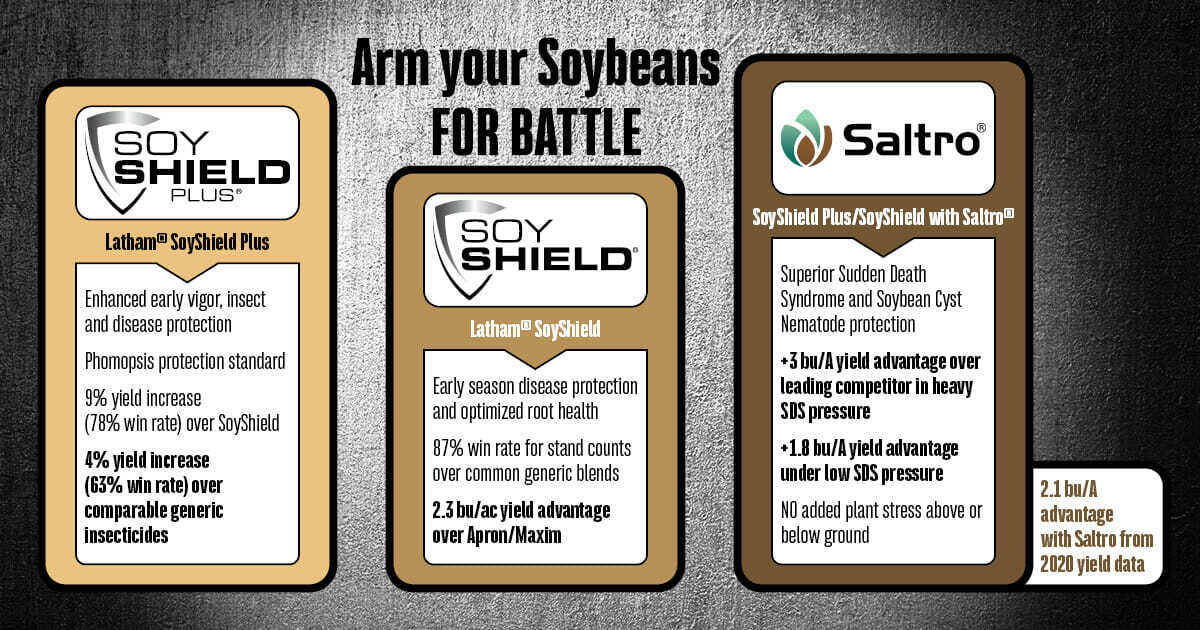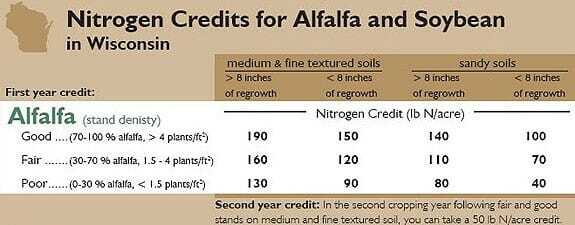Precision Agronomy Advisor, Phil Long, breaks down soil pH levels and highlights best practices to work with mother nature on managing them. Check out some new ideas as we head into the spring.
-
Latham Hi‑Tech Seeds
Start the Season Right by Planting the Right Genetics

With the 2022 planting season right around the corner, it’s time to focus on the one thing that will help you capture the most ROI in each field.
Field-by-field product placement is key to maximizing yield – and in turn – profit. Research shows plant genetics account for a 20% difference in yield. This means you could raise 12 more bushels of soybeans and 40 more bushels of corn PER ACRE simply by paying closer attention to your crop placement.
Below are three factors to consider when double-checking your crop placement for 2022:
- Study Field x Field® Ratings. Look at the Field x Field Ratings in the Latham® Product Guide for corn and soybeans. These charts simplify where you should place hybrids and varieties. A “1” rating means it’s a great fit for a particular environment; a “3” rating means you should not plant that product if your field conditions match that description. Your Latham Dealer has seen most of our products in environments, so call him or her if you have additional questions about where to place a particular product.
- Stick to the plan. If your seed dealer has provided you with a Field x Field plan, organize your seed shed so you can stick to the plan. Subscribers to Latham Seeds’ Data Forward® program receive a crop plan book, which you can keep in your planter tractor. It’s a good practice to double check that the right seed gets in the planter. If planting conditions change in a particular field, then take the time to move products. It will be worth an hour of your time to capture the extra $150 to 200 per acre in profit potential.
- Match Genetics to Management. If a certain corn product is described as “likes high management,” then you should not place that product in a field with poor fertility levels. Your seed dealer may not know your fields’ fertility levels unless you share it. That information is critical for accurate product placement as some genetics can handle tough fertility situations and others will fall apart in those environments. Also make sure you aren’t overplanting or underplanting each hybrid. Look at the “suggested populations” in our Product Guide, as well as the “Ear Type” rating and our stress wheel poster. We want to help you capture yield!
If you’re planting soybeans early or at the same time your planting corn, treat the seed with SoyShield® to protect it from early season fungal diseases. Seed treatment also gives seedings an early advantage. Even when using a quality seed treatment, plant fields with the heavy soils that remain wet and cold last or at least the soils have warmed. This will help your soybeans better ward off root diseases all season long.
A successful 2022 crop year begins with having a plan and sticking to it! Take the time now to double-check that you properly matched plant genetics with soil conditions. Our dealers are also happy to talk through field placement as well. If you have further questions or want to chat with our agronomists call: 1.877.GO.LATHAM (1.877.465.2842).
-
Latham Hi‑Tech Seeds
#AsktheAgronomist – Soil Tests and Batteries
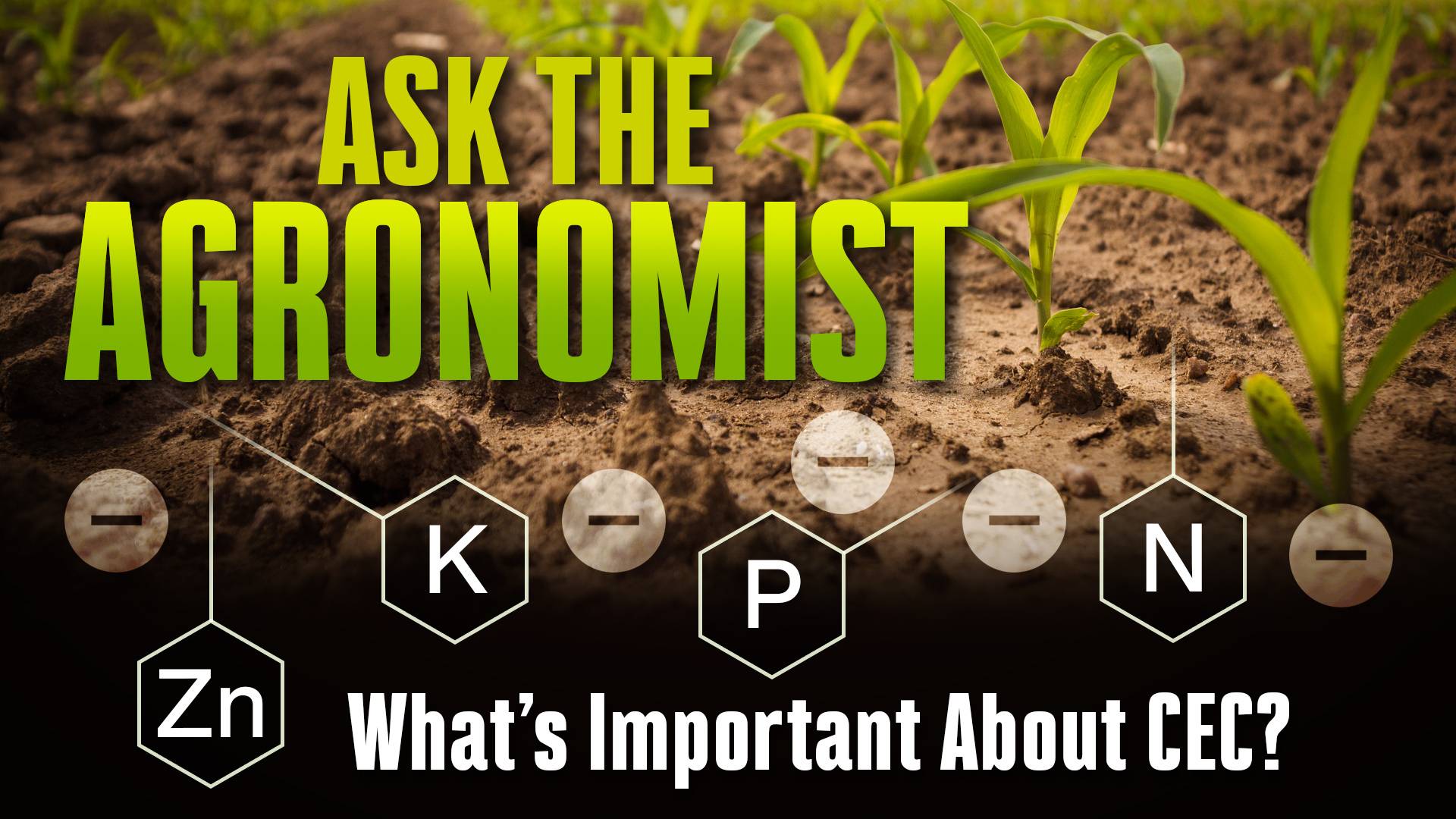
What does my soil test have to do with a battery? Phil Long, precision agronomy advisor, has a fun activity to test your soil as he discusses CEC (cation exchange capacity) and how that affects your soil.
-
Latham Hi‑Tech Seeds
#AsktheAgronomist – Potassium Levels

Phil Long, precision agronomy advisor, continues his soil fertility series with the topic of Potassium. He highlights different challenges that come along with building Potassium levels and what you can do to reach your goals.
-
Latham Hi‑Tech Seeds
#AsktheAgronomist – Too Much Nitrogen?

Phil Long, precision agronomy advisor, continues his soil fertility series with the topic of Nitrogen. Is it possible to have too much Nitrogen?
-
Latham Hi‑Tech Seeds
#AsktheAgronomist – The Zinc and Phosphorus Relationship
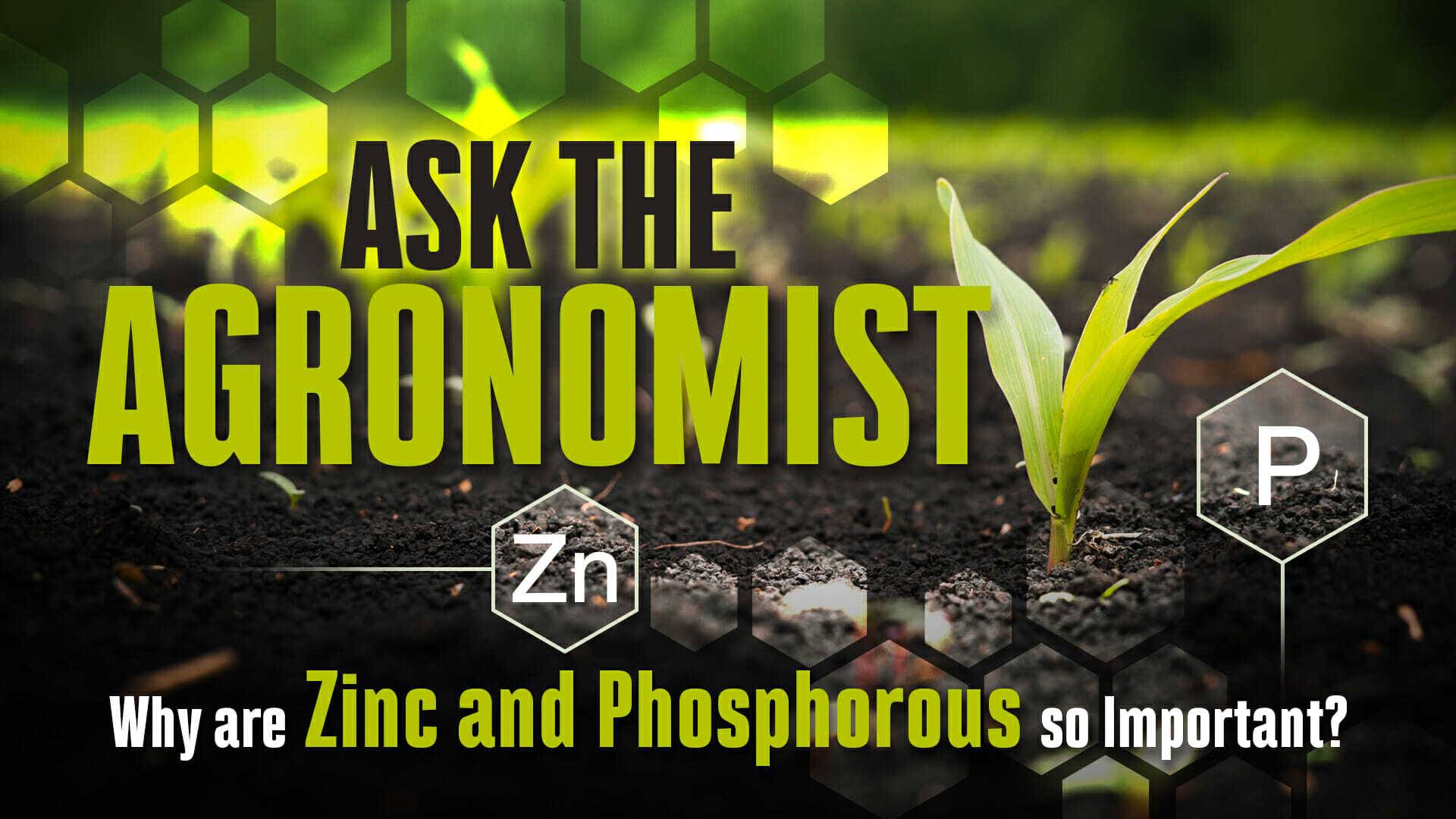
Why are Zinc and Phosphorus important for soil health? In this short video, Precision Agronomy Advisor Phil Long breaks down how these two elements can work well together or be antagonists.
Check out our Latham Hi‑Tech Seed YouTube Channel where our agronomists unpack other agronomy topics.
-
Latham Hi‑Tech Seeds
It’s More Cost-Effective to Plant Alfalfa in 2022
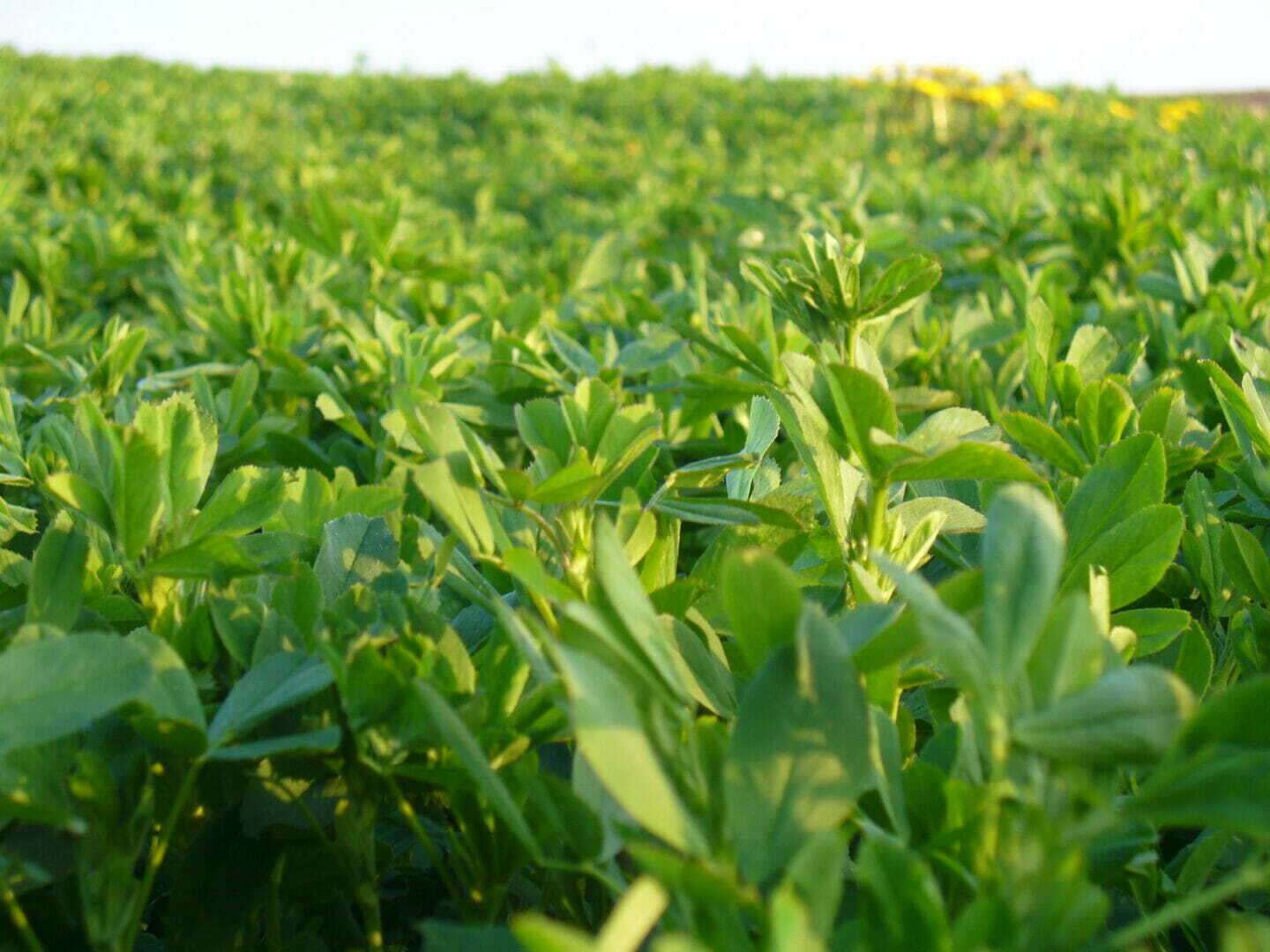
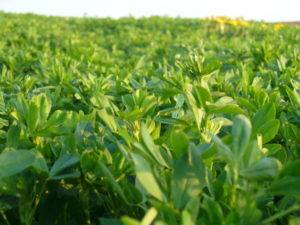
Latham’s Proprietary AlfaShield Seed Treatment accelerates emergence and protects against diseases. The growth in the cover crop markets combined with production shortages have grass seed prices climbing significantly. As a result, it’s not as economical to plant a grass seed-alfalfa mix. If you’ve historically planted a grass seed-alfalfa mix, consider a solid-seeded alfalfa for spring 2022.
High fertilizer prices have many farmers looking at every nitrogen credit. Similar to soybeans, alfalfa fixes most of its own nitrogen. Latham Seeds’ signature seed treatment, AlfaShieldTM, contains key micronutrients like molybdenum and an LCO growth promoter called Optimize® Gold. Having these components readily available upon emergence increases the chance of early nodulation and nitrogen-fixing cycle.
The speed at which an alfalfa plant creates nutrients correlates to yield, as well a healthier long-term stand. Alfalfa can fix an average of 150 to 200 pounds of nitrogen per year and has a robust advantage in providing nitrogen credits years after the stand ends.
The chart above outlines potential credits. Traditionally, the subsequent crop planted on rotated alfalfa yields about 15 to 20% more! There is more good news, the value of alfalfa extends beyond the nitrogen credit. Alfalfa has many other assets to accompany your operation:
- Next years crop’s roots can grow deeper as alfalfa’s tap root extends beyond the soil hard pan.
- Alfalfa stands are three to four years old and can break down disease cycles.
- Alfalfa interrupts the insect cycles and reduces the use of common herbicide.
- Alfalfa is a great diversification tool and adds an additional avenue of revenue.
- Alfalfa seed can also be amortized over three to four years!
Making alfalfa part of a crop rotation has so many advantages. Talk with your Latham® rep today about making it part of your 2022 crop plan!
-
Latham Hi‑Tech Seeds
Balanced Fertility to Optimize Yield
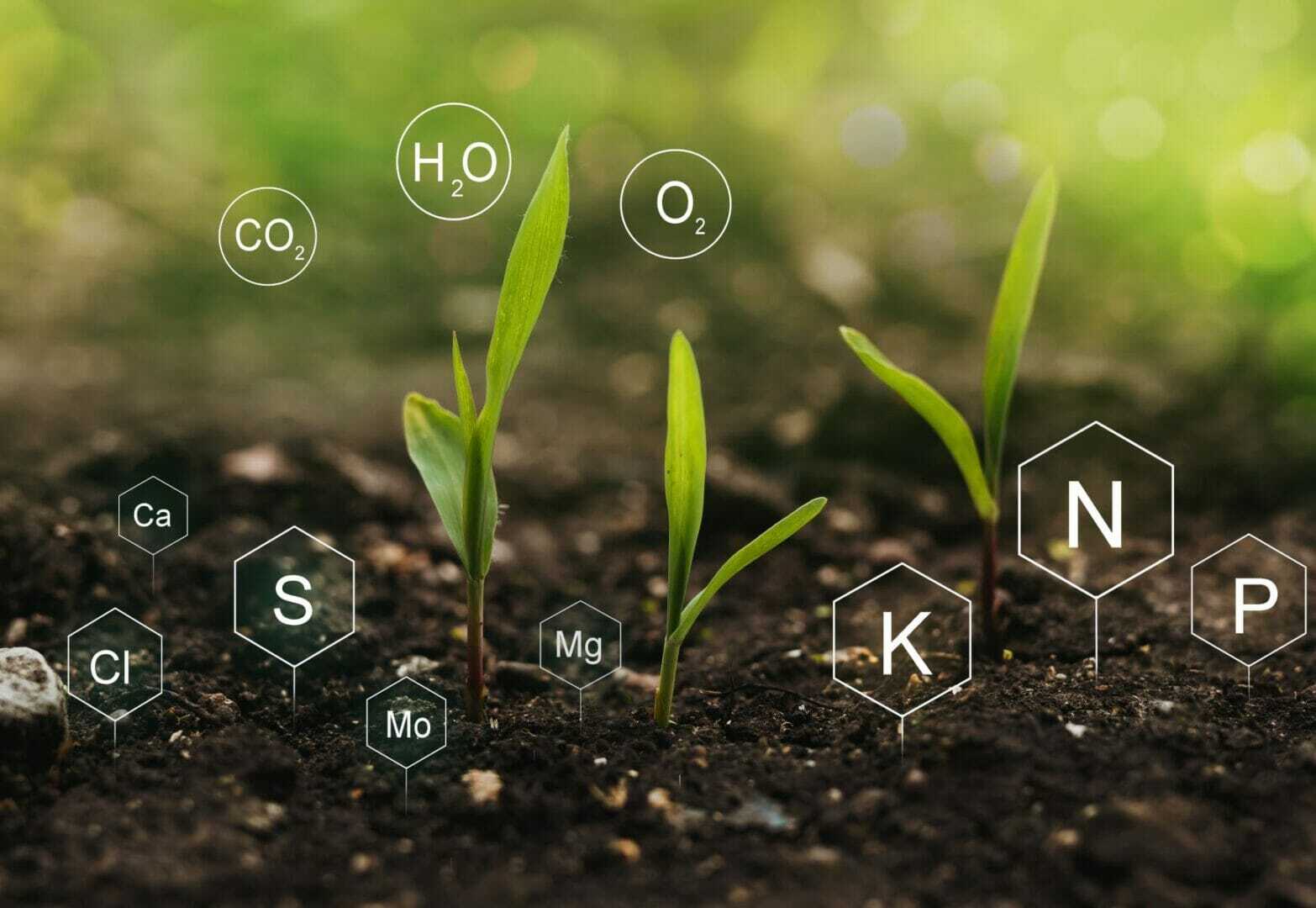
High yields from 2021 combined with increasingly high fertilizer for spring 2022 have caused many farmers to scale back their fertilizer applications. While they may save on short-term input costs, they could lose more in yield than they’re saving.
Spending lots of money on fertilizer doesn’t equal high yields, however, having a soil balance sustains a corn or soybean crop during a tough year. So how can you strike a balance? It’s important to start with pH, especially when growing legumes like soybeans, edible beans and alfalfa.
A soil pH around 6.5 is important because it determines if nutrients are in usable form for the crop. If you struggle with high pH, fertilizers like MAP and AMS that are more acidifying will help lower pH over time. The micronutrient part of your fertility is also very important. In most cases, you don’t need to add as many micronutrients to fix a low test; you just need to be aware of which nutrients may be too high and thus limit the availability of other nutrients.
Soil biology – fungi, bacteria, and other microbes – play a key role in cycling nutrients to available and unavailable forms. It’s more about having a balance and being in the right form than it is about applying lots of fertilizer. For example, Iron Deficiency Chlorosis (IDC) in soybeans results when iron is not in an available form for the plant to take it up; there is actually over 20,000lbs/acre of iron in the top 8 inches of our soils!
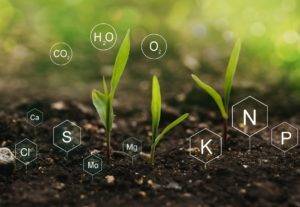
A 200-bushel corn crop removes approximately 150, 70, and 50 pounds of N, P, and K respectively per season. A 60 bushel per acre (bu/A) soybean crop removes approximately 240, 50, and 75 pounds of N, P, and K per season. Do we need to apply exactly those amounts? No, but we must understand what the soil can provide and how it maintains a balance that is available to our crops. Soil testing is so important for gaining this understanding. When problem spots arise, then we tissue test, take additional soil samples, and use other information to diagnose.
The key point is a lot more goes into maintaining a balance in your soils than just applying the same amount of fertilizer every year. The best place to start is with a soil test. Latham’s Data ForwardTM program helps takes some of the worry and complexity out of it while figuring out what your soils needs. Remember, your soils are not identical to your neighbors’. A soil test is key to finding the right balance for higher yields on your fields. I’d be happy to discuss with you any questions you have about your soil and how Latham’s Data ForwardTM could help you iron out your fertilizer needs. Call 1.877.GO.LATHAM (1.877.465.2842).
-
Latham Hi‑Tech Seeds
#AsktheAgronomist – Wildfire Smoke

Have you ever thought about wildfire smoke and how it may affect your crops? Precision Agronomy Advisor Phil Long unpacks how wildfire smoke can play a role in yield potential.
-
Latham Hi‑Tech Seeds
Does it Pay to Foliar Feed Soybeans?

In this week’s #AskTheAgronomist, Precision Agronomy Advisor Phil Long addresses common questions related to foliar feeding soybeans and what he learned from this past growing season.
:30 – Topic Introduction2:40 – Results from this year7:25 – Takeaways
